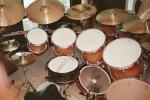About what?? There are several ways to look at this wire debate just like anything else in audio. Some will tell you heavy some light, some bi wire, some will say use 12 gage as it doesn't matter. How do your speakers sound to you now?? That's all that matters. If you want to experiment go ahead have fun. You have plenty of ideas here just go with what makes the most sense to you and maybe try something that doesn't. Your talking what 2 6ft runs of wire. This isn't rocket science and it's not like you can't change things down the road. The only way your are going to miss the boat is if you put too much importance into what should be a rather simple decision. Just relax and enjoy your rig.So i guess im confused...
Rob




 Reply With Quote
Reply With Quote





 At least I am learning . . .
At least I am learning . . .







